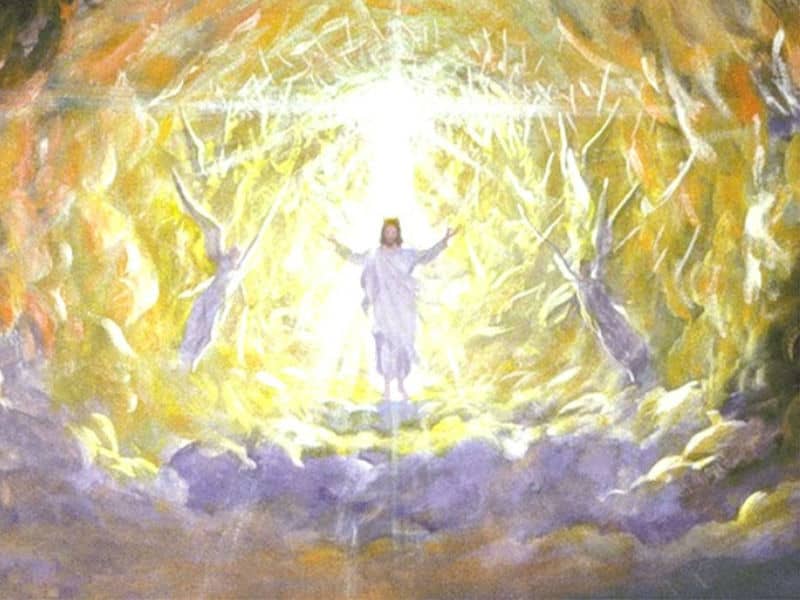Almost all American Jews know that intermarriage rates have been rising fast. They may not recall the numbers, but they know the trend. In fact, according to the 1990 National Jewish Population Survey, 52% of marriages that a Jew entered into in the 1980s were with a non-Jew. We'll soon find out what news the 2000 survey brings about intermarriage.
The numbers we have are bad enough. But knowing the statistics and actually seeing their impact are two different things. One place from which you can see that impact is the bimah during a bar or bat mitzvah.
As a member of my (Conservative) synagogue's executive committee, I alternate with other members sitting at the front of the synagogue during Sabbath services, up on the raised platform called the bimah. It takes two minutes to present the bar or bat mitzvah with a gift from the congregation, and another two minutes to make the announcements at the end of the service, right before Kiddush, the blessings over wine and bread. The rest of the time, I am either facing East (toward Jerusalem, with my back to the congregation) and praying, or facing and studying the congregation.
Like many synagogues, we set aside a section for the bar- or bat-mitzvah family. Parents and children sit in the first row, grandparents usually right behind, and aunts, uncles, and cousins in the rows behind them. Here the statistics come to life. In the Conservative (and the Orthodox) movement, adult males wear a talit, or prayer shawl, during Sabbath services. Twenty years ago, the family section usually looked just like the rest of the congregation, only better dressed: all the adult men wore the talit. Today, it is a rare Saturday when most of the men wear a talit; very often, just one or two do, and sometimes the bar-mitzvah boy may even be alone in donning this garment.
Our rabbi has the custom of inviting the extended family to rise and say the Shehecheyanu prayer, thanking G-d for allowing them to reach this joyous day. Very often nowadays, this invitation inspires confusion and embarrassment in the family section, where guests shift uneasily while the bar- or bat-mitzvah child and his or her parents--or the one parent who knows the prayer--pronounce it.
This moment has, for me, become a symbol of the intermarriage issue. Intermarriage does not disappear as a problem once the wedding is over or the religion of the children is chosen. Here, 13 years later, one either sees Jewish families rise in unison and in joy--or mixed families still divided, unable to enjoy the occasion fully. Of course, this is a generalization: Sometimes divorces or separations in a 100% Jewish family keep the tension so high you can easily feel it, and sometimes intermarried families seem absolutely at peace with the occasion and are enjoying it fully. What are those latter cases?
Of course, in a Conservative synagogue the distinction between a Jewish and a non-Jewish parent is more marked than would be the case in a Reform temple. In our synagogue, for example, parents and child customarily approach the Ark at the start of the Torah service, and the father hands the Torah to the bar- or bat-mitzvah child. If one parent is not Jewish, he or she stays seated because a non-Jew is not permitted to participate in the Torah service this way. Similarly, the Jewish parent will be called to read from the Torah or pronounce blessings before and after the Torah reading, while the non-Jewish parent stays seated. Here again, conversion erases the distinctions, as it should under Jewish law. But when the parents are of different religions, that fact is visible.
One of the little-discussed effects of the great rise in intermarriage is the frequent presence now of non-Jews in synagogue services. Add non-Jewish friends to non-Jewish relatives who are invited to a bar or bat mitzvah, and often gentiles constitute a substantial minority bloc during a Sabbath service. It can occasionally even reach the point where one feels less like a member of a Jewish congregation at prayer and more like a member of a strange tribe under observation by outsiders.
What is to be done? Provide better written materials explaining Sabbath services to non-Jews, for one thing, because unless intermarriage statistics drop sharply, there will be an increasing number of gentiles sitting in synagogues all across the country. Make small adjustments in the service sometimes, for another, when it is clear that the vast majority of relatives present are in fact not Jewish. And above all, strongly encourage conversions in the context of mixed marriages. The impact of intermarriage is crystal clear from the bimah these days, as are the blessings of conversion.

